Today I’ll discuss where not to journey in Natural Israel using three rules that, in my experience, help determine where to freely and openly explore the country. Next week I’ll finish this guide by sharing the best regions for Israel voyages.
Before beginning your journey through this article (afterwards is also fine!), make sure to check out the new Events and Programs section on the THJ website for guided foraging walks, The Healthy Jew Course, and personalized health coaching. It’s worth it!
As I’ll explain in a minute, the first limitation on journeying in Israel is the security situation. Although political commentary is beyond the purview of The Healthy Jew, the region’s simmering stew of political opinions directly affects the aspiring traveler, especially if he or she seeks to study and experience the journey of life inside the Chosen Land, and not just hop from one destination to the next in an armored bus or tank.
Now is an appropriate time of year to feel the pain behind these facts on the ground. Tonight the Jewish people mark yet another anniversary of the Temple’s destruction in 70 CE, a cataclysmic event which, in a word, turned the Jews into a nation without a land to call home. After almost two millennia of wandering, a large percentage of the Jewish people have today returned to Israel, and govern themselves in part of the territory that their ancestors lost. Yet large portions of historical Israel remain firmly out of bounds for Jews. And many other regions, while technically administrated by Jewish soldiers, aren’t safe for the journey of life.
I’m not saying that Israel’s military occupations are right or wrong, nor whether it’s right or wrong to call them occupations. I’m not even declaring that the modern State of Israel is a good thing for the Middle East, nor am I saying we ought to humbly subdue to the State of Palestine until the Messiah delivers a benevolent Jewish theocracy. (And I’m definitely not weighing in on the current judicial reform upheaval about which I know woefully little.)
For our discussion, all that is but a distraction. What concerns us is the spiritual underpinnings of the obstacles and dangers of journeying through Israel. No matter how many tanks and helicopters are in the hands of the Israeli Defense Forces, Jews are unable to freely roam every last valley and hill of God’s Chosen Land. We can’t set out on a voyage with only the trail ahead to guide our way forward, completely at one with the journey.
Over three thousand years ago, right before we entered Israel for the first time, God told us what would happen if we “observe all [these] commandments… love God, go in all His ways, and bond with Him”:
Everywhere that your feet will step will be yours… nobody will stand before you, God will place fear and worry of you on all the land. (Deuteronomy 11:25)
But today, much of the land remains beyond the reach of our feet. In much of what remains accessible, Jews are afraid and worried to walk freely.
If only for that, it would be worthy to cry.
And yet, as we’ll learn next week in detail, large sections of Israel are safer for journeying than they’ve been since the first century CE, which is no small gift. Even if we can’t hike everywhere, much of Natural Israel opens its arms in welcome.
So journeying through Israel today is a mixed bag, filled with both sadness and joy - just like life itself.
Where Not to Journey in Israel
Let’s begin with three rules about where not to journey, at least not unless you’re very experienced and perhaps armed.
1. Security
Israel is a complicated country. Politics are usually a mess, the security situation always volatile. Many summers herald a battle or two in Gaza or the West Bank, which often spark instability inside Israel proper. Large swaths of the land between the River and the Sea are unsafe for travel, to one degree or another.
Even after ruling out areas that Israelis are barred from entering, and places that are technically legal but considered dangerous, many local journeys are safe only inside a car. Other journeys are safe on foot but pass uncomfortably close to places that aren’t. Remember, Israel is a geographically tiny country.
This guide will avoid all precarious places because it’s hard to be completely present for the journey while worrying about becoming the next smiling face in the news headlines. (“Hiker Found Dead in Desert Near Jericho”.) A good rule of thumb is to travel in areas where walking is as safe as driving. And anyways, we want to get out and hike, right?
2. Hiking Alone
Hiking by yourself is controversial territory. Some people love hiking with their own company; others say it’s terribly dangerous. I say that it depends where you’re going. (Hiking experience is also very important. If you sometimes forget to bring enough water, better to go with a friend.)
In general, I suggest journeying in regions where it’s safe to be alone with God in God’s world. Even if you go with friends or family, it’s easier to be present in a place you could have gone yourself. Of course, it’s possible to genuinely journey with a guided tour, but that requires lots of outside factors working out: availability, cost, type of group, and so on. I wouldn’t want your life’s journey to depend on anything but your feet and the next bus.
3. Natural Israel
As I mentioned last week, city walking is totally legit journeying. There are many important places to travel inside Israel’s cities. Still, to look for the full, unfettered experience of Natural Israel, this guide covers journeys that are outside major metropolitan areas.
Checking the Map
So where do these 3 rules leave us? We’ve disqualified four regions from our journeys. (At least for us unarmed beginners.)
1. The Negev Desert
Hikers in the know advise against walking alone through the Negev’s sweltering heat and then shivering alone through its pitch-black, freezing nights. In addition, I hear, large areas of the southern Negev are virtually lawless. The terrain can also be dangerous; many trails hang over steep precipices, with no cell reception at the top or the bottom.
A few years ago I went with a friend to the Negev’s Small Crater, not far from the Dead Sea. The scenery was stunningly beautiful, the colorful rocks lending the open basin an extra-terrestial tinge. But I found it hard to be peacefully present when one misstep would topple me over into the abyss. Although, at least in retrospect, feeling dreadfully unnerved was part of the journey’s process, when I got home I declared that I’m done with the Negev.
Nevertheless, several months later I was back in the Negev on an easier trail over the plateau above Qumran (where the Dead Sea Scrolls were found). But this time the desert’s silence was deafening and terrifying.
I haven’t hiked in the Negev since, although I’m open to another journey there one day with a friend or group – if the trail doesn’t hug any cliffs.
2. The West Bank
Or, as the locals call it, hashtachim, which literally translates as “those areas.” (In the map above, this area is called Judea and Samaria. I avoid that title because it’s inaccurate, see this note.
) One of the most politically charged places in the world, hashtachim have been occupied by Israel’s military since 1967 (but were never officially annexed), and are home to millions of furious Palestinians lumped together with hundreds of thousand of Jews whom most of the world - but not Israel - views as illegal settlers. Whatever your political view, I believe this seething quagmire is no place for Healthy Jews to freely journey through Natural Israel, certainly not unarmed or alone.It goes without saying that Gaza too is out of the picture. I don’t have anything intelligent to say about about stomping around the open fields close to Gaza, although it’s obviously not smart to hike there when rockets and missiles are flying.
3. Jerusalem
Jerusalem is the holiest city in the world, and a wonderful place to visit and live. Jewish tradition places Jerusalem as the destination of all journeys, so it surely has much to teach about them. As Jacob said after his ladder-dream on the Temple Mount, “this is the house of God and the gate to heaven (Genesis 28:17).”
Nevertheless, because Jerusalem is a bustling metropolis loaded with concrete, distractions, and dangers, let’s head for the sloping hills to the west. Why only the west? Because the West Bank surrounds Jerusalem all other sides (and to the east is a the desert that drops down to the Dead Sea).
4. Tel Aviv and its Suburbs
Or, as the area is commonly called, Gush Dan, after the tribe of Dan who settled here in the biblical era. (Or, in the map above, the Coastal Plain.) These cities too have much to offer the sincere traveler - the flat terrain is great for walking and biking - but, again, we prefer fields, hills, and valleys over sandwiched skyscrapers.
So where should you journey, and what does each region offer? Stay tuned next Wednesday…
If you haven’t hopped over there yet, check out the new Events and Programs section on the THJ website for guided foraging walks, The Healthy Jew Course, and personalized health coaching. It’s worth it!
Food for Thought: The complexities of traveling in Israel aren’t mere technicalities, but reflect the spiritual reality of the Jewish nation’s current state (and State). Let’s contemplate and mourn these obstacles and dangers, together with the tragic conflicts that cause them.
One Question: Where have you learned not to travel, in Israel or wherever you live? What might that tell you about the journey of life?
The Samaria region of the West Bank (north of Jerusalem) is basically the same as historical Samaria. But the tribe of Judah (of Judea) settled far beyond the southern West Bank. Their territory included the mountains to the west of Jerusalem, the lowlands west of them, and most of the Negev - and two of these three regions are great for journeying (as I’ll explain next week)! Therefore, I prefer just saying West Bank, a mostly accurate geographical term which just means the areas immediately west of the Jordan River and Dead Sea.
Subscribe to The Healthy Jew
Choose well. Eat well. Move well. Be well. Relate well. Discover Natural Israel.

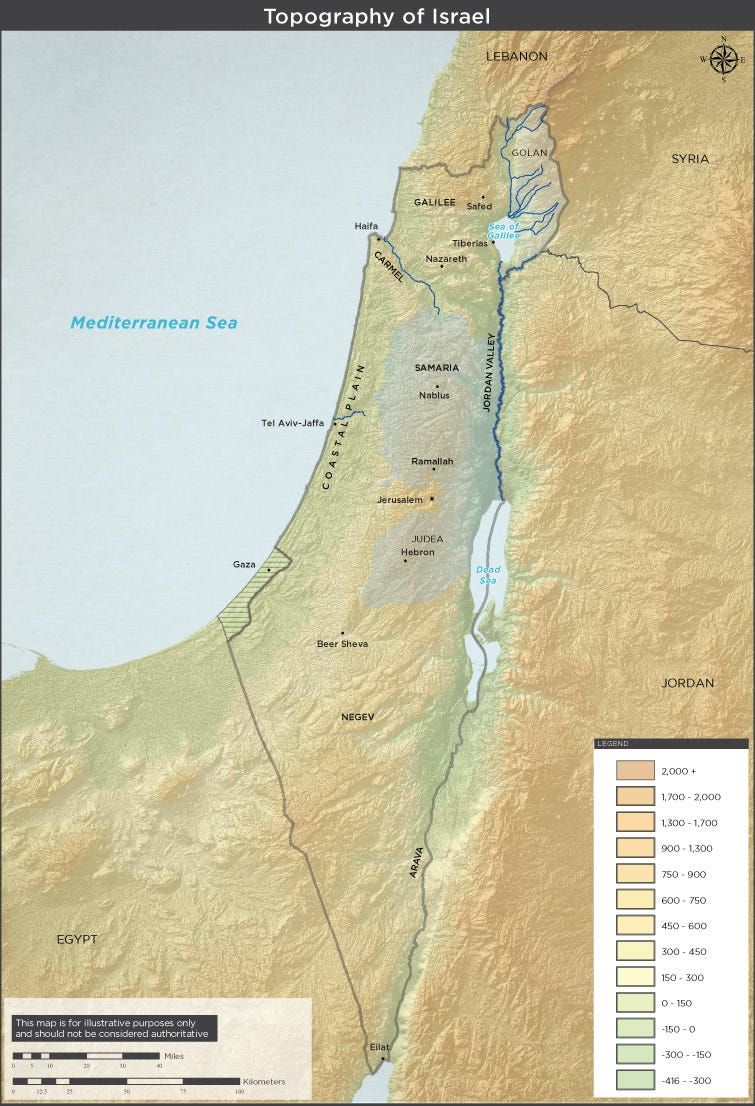
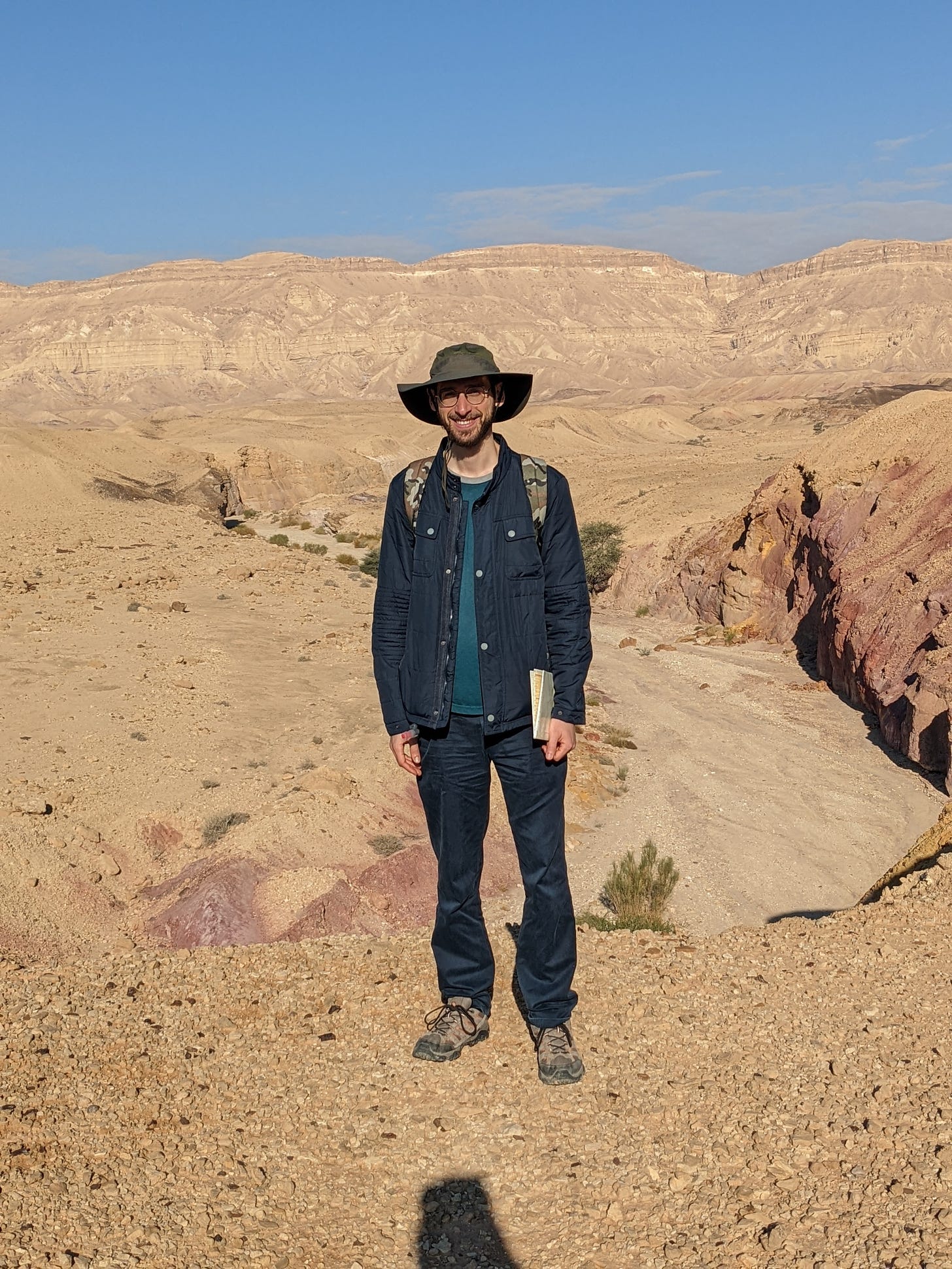
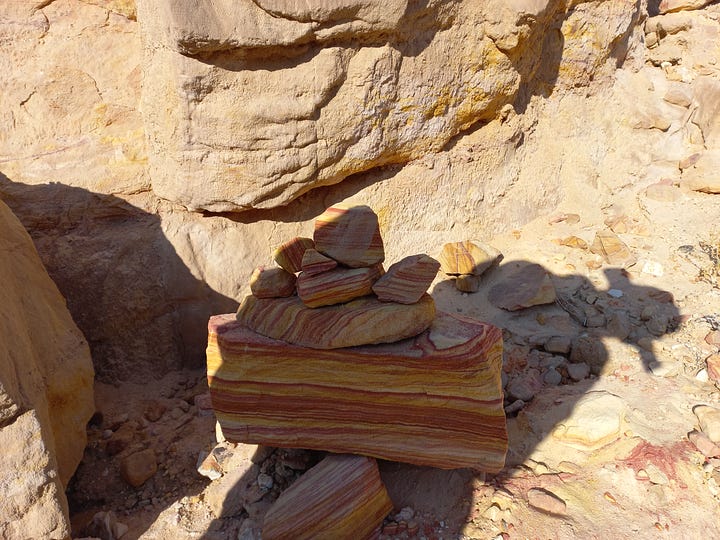
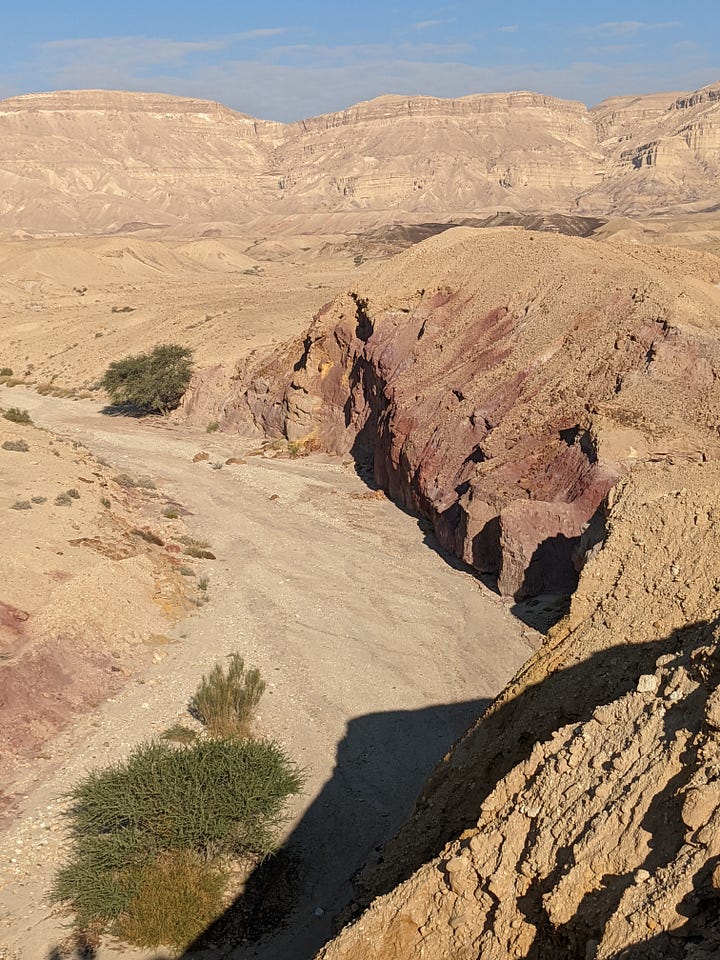
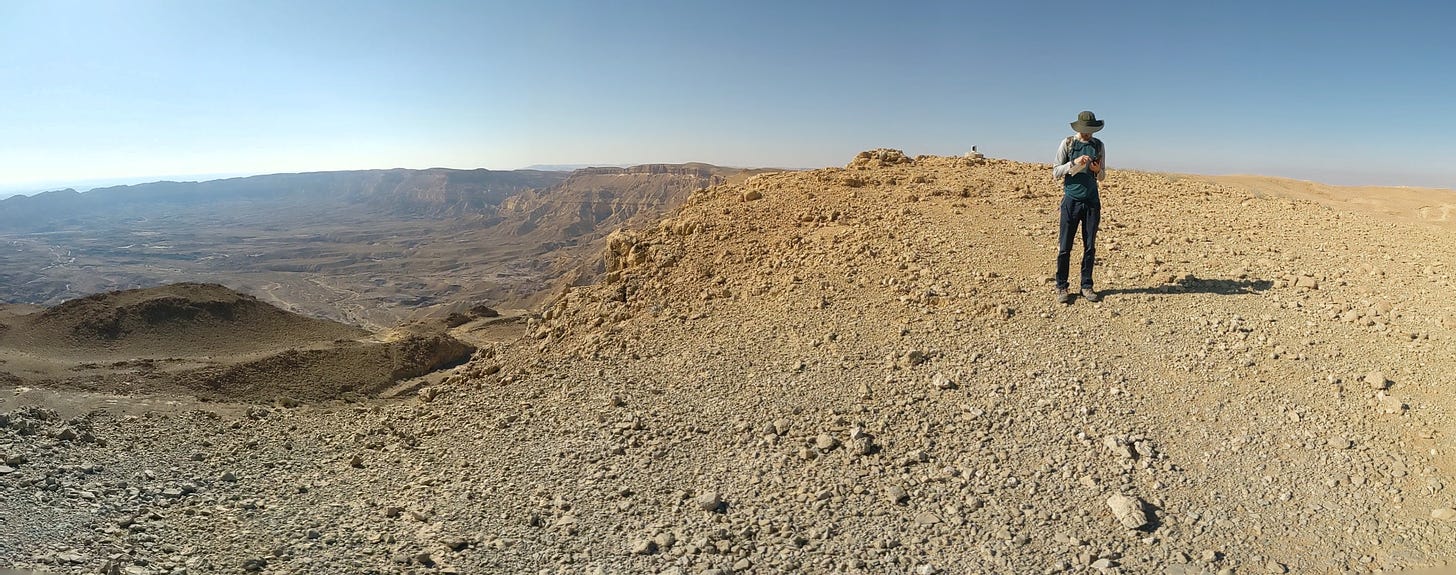
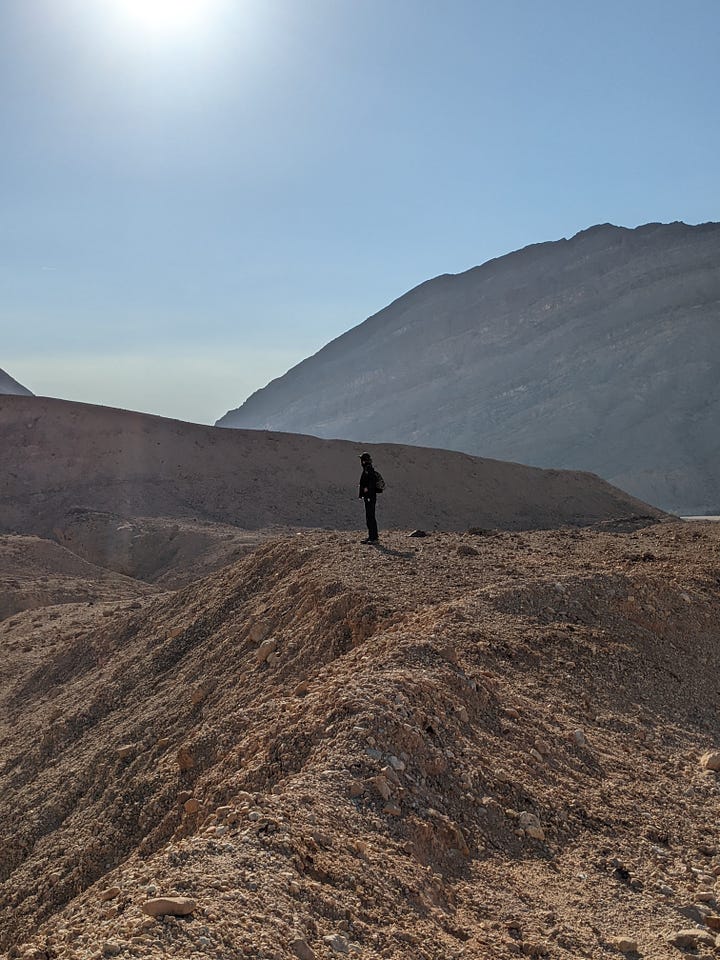
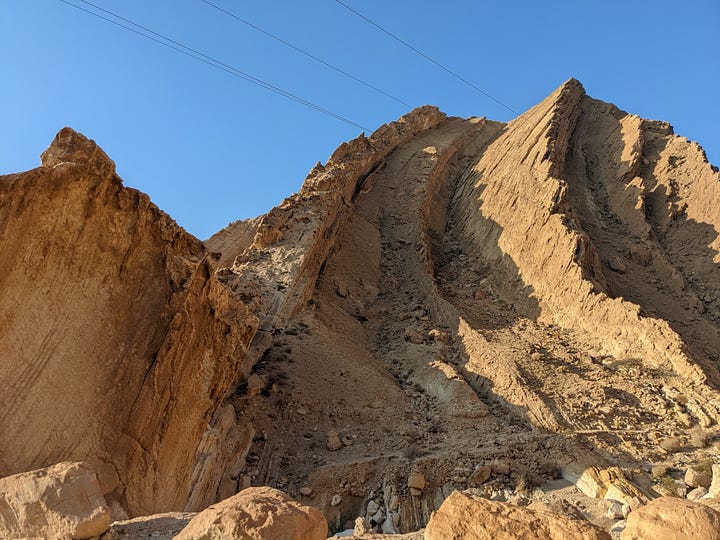
2 comments:
This writer is guilty of the same sins of the meraglim by suggesting that the readers avoid visiting Yehuda and the Shomrom even referring to it as the derogatory "shtachim". Hundreds of thousands have returned to our ancient homeland despite the dangers and geopolitics. Come and see the beauty and experience this miraculous place while following in the footsteps of Jewish history.
An article by a leftist liberal just like President Herzog.
Post a Comment